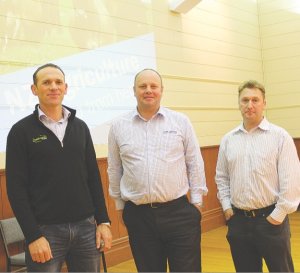This is what he told a Beef + Lamb field day ‘NZ Agriculture – Where to from here?’ at Warkworth, north of Auckland earlier this month. Parsons touched on the disadvantages of auctions as part of wider criticism of the complexity of supply chains for beef and sheep.
In these markets many supply chains start with the breeder selling to an agent who auctions to a finisher, then on to a works agent, then a processor. All our stock is processed:, 95% of lamb and 85% of beef being exported. It goes to an importer in another country, gets processed again to retail-ready then on to retailers
and consumers.
“There are lots of points of ownership, lots of information has to change hands and that’s pretty complex.” It ends up with Chinese whispers and the farmer getting a “distorted message as to what the consumer is actually thinking. This is a challenge for meat and fibre supply chains: how do you reduce the complexity to get more transparent and faster information flows?”
Putting stock through auction, ‘commodifys’ the product even more.
“For me as a breeder, let’s say I’m selling some store stock to a finisher and I send it down to the local saleyard, there’s absolutely so relationship between myself and the finisher. The relationship starts before the hammer and then it’s over. So the chance of repeat business is very low….
“An auction distorts that information flow even more. Instead of a relationship with a finisher where I can start tailoring my genetic selection as a breeder to what that finisher wants, then feeding through to what exactly the market requires, the auction blocks that.
“I am not bagging auctions; I think there is a place for them [because] you do need some price discovery. But if we want to start developing more niche products and creating value chains, an auction doesn’t fit in that structure.”
Parson, who studied supply chains overseas on a Nuffield scholarship, says to reduce complexity you reduce the number

















